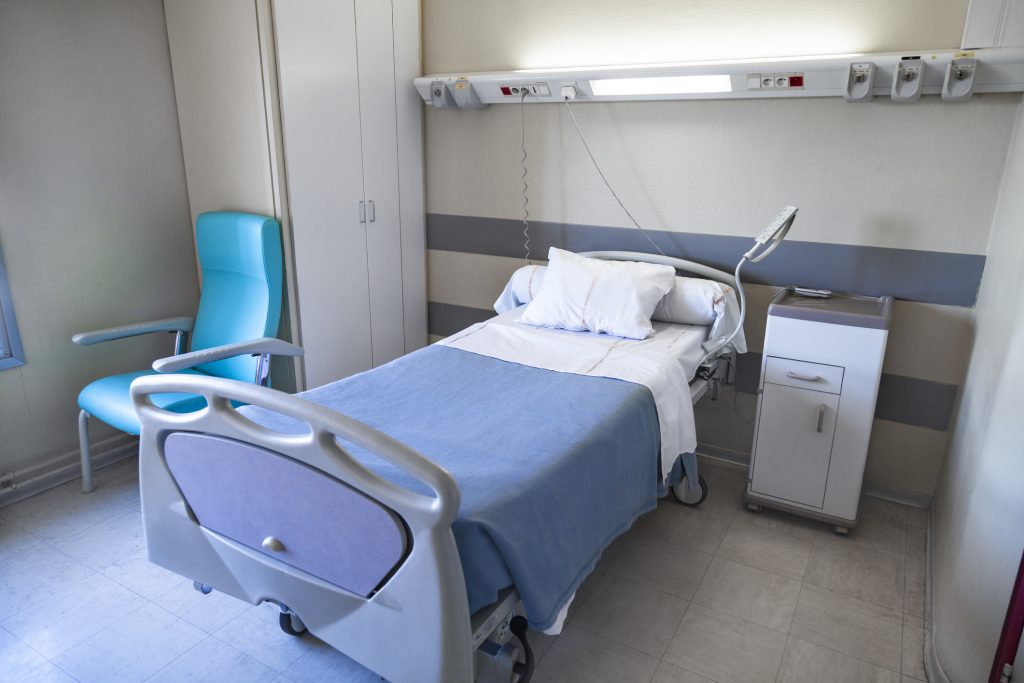
Bedsores are a serious condition, with 4 separate stages of increasing severity.
- Stage 1: Irritated, discolored skin
- Stage 2: Broken skin and open sores
- Stage 3: Deep sores
- Stage 4: Damage to bones, joints, and muscles due to exposed skin
Bedsores are also known by the more descriptive terms of pressure sores or pressure ulcers. These names come partially from the cause, that is, pressure applied to the skin for long periods of time. They are especially prevalent in people who are unable to move around well, such as those who spend most of their time in a wheelchair or bed. Because of this, nursing home residents with mobility problems are a particularly vulnerable population for bed sores.
Bedsores are an important issue to address as they can be life-threatening, so early intervention and treatment are essential. The following is a breakdown that medical professionals use for the 4 stages of bed sores. Different stages may require different treatments and require different recovery times.
When a senior in a nursing home is exhibiting signs of bedsores, it is often a sign of abuse or neglect, and time to talk with a Dallas nursing home lawyer about what your legal options are.
Were You Injured? Call Now For a FREE Consultation!
Stage 1
Stage 1 bedsores include irritated skin that is not yet broken, but is discolored. It will appear red or purple depending on the complexion of the individual affected. These bedsores will also include a noticeable change in skin temperature, either warm or cold, compared to the surrounding skin. The skin is not, however, broken.
Stage 1 bedsores will typically heal in a few days once the pressure causing the condition is relieved. Nursing home staff should change the person’s position, tend to the sore, and regularly check that it does not get worse.
Stage 2
If left untreated, Stage 1 bedsores will develop into Stage 2. At this point, the condition has gotten worse, penetrating into the inner layer of skin, and the uppermost layer of skin is broken. This creates a shallow, open sore, and, similar to Stage 1, the skin affected is warm.
Stage 2 bedsores are more serious and can lead to complications like infections that can become life-threatening. It is important that they are diagnosed and treated but usually heal within 6 weeks.
Stage 3
Stage 3 bedsores include deep sores that look like craters that are formed in the skin. The sore has extended through the second layer of skin, and it turns black due to dead tissue in infected skin.
Stage 3 of bedsores is a sign of elder abuse or nursing home abuse as they have been allowed to progress through the first two stages. These bedsores require immediate medical attention. Health care providers will have to prescribe antibiotics and other treatments to treat the infection and help heal the sore. These bedsores may take longer than 6 months to heal, even with proper medical treatment.
Stage 4
Stage 4 bedsores are the most serious. When bedsores become this bad, there may be damage to the bone, joints, and muscles, all of which may be exposed due to loss of skin. Additionally, a large amount of skin has died by the time the bedsores develop to this stage.
Stage 4 bedsores take up to a year to heal, though often do not heal fully and may remain present in people with chronic conditions. Bedsores this serious can cause life-threatening conditions and require medical intervention as drastic as amputation to prevent the infection from spreading.
If You or a Loved One Have Been a Victim of Nursing Home Abuse or Neglect, Crowe Arnold & Majors, LLP Can Help
If your loved one is exhibiting bedsores in a nursing home, contact our Dallas elder abuse lawyers at Crowe, Arnold & Majors, LLP. We understand that nursing home neglect can be a confusing, frustrating, and sensitive topic. We are here to treat you and your loved one with the compassion and understanding you deserve, and we are ready to fight all the way to hold responsible parties accountable. Call today for a free, no-obligation case review to discuss your options.





